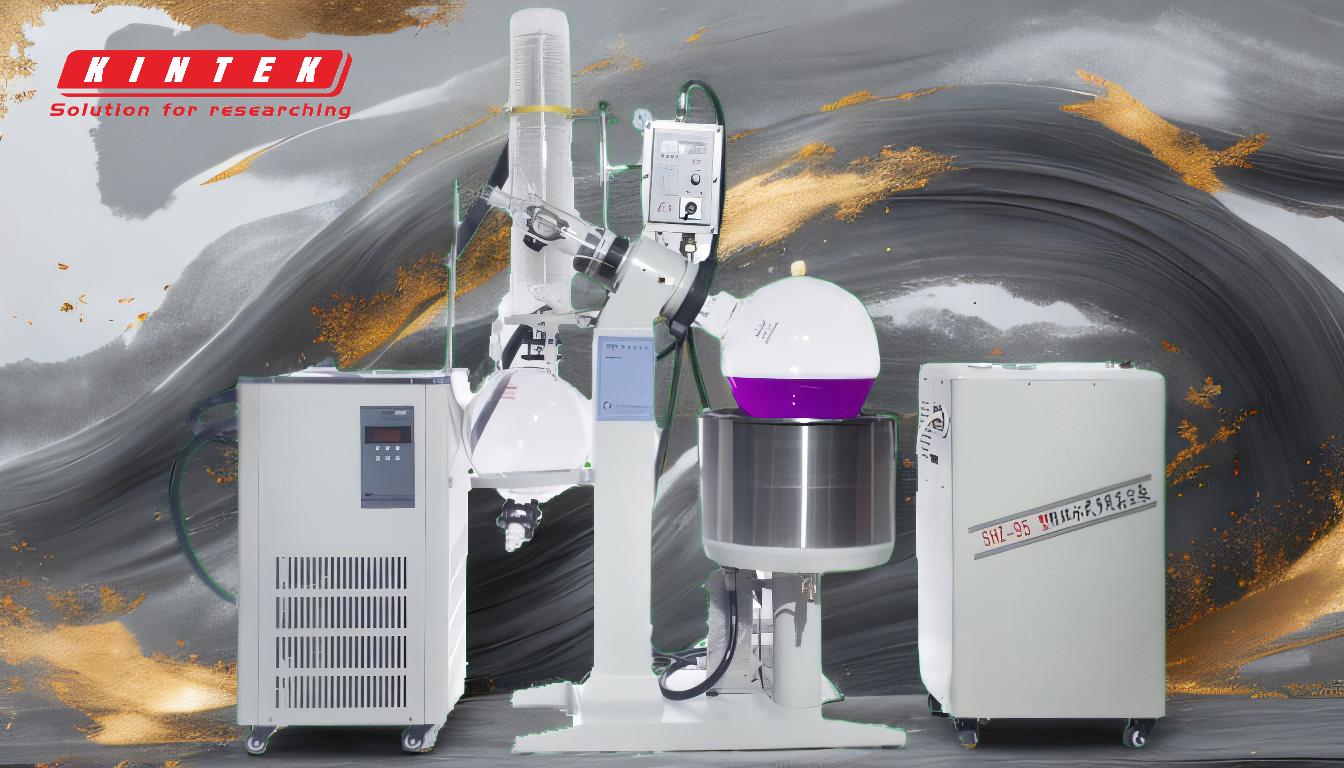Vacuum distillation is a critical technique used in various industries, particularly for separating and purifying liquids with high boiling points or those that are heat-sensitive. By reducing the pressure in the system, vacuum distillation lowers the boiling points of the components, enabling separation at lower temperatures. This prevents thermal degradation, polymer formation, or decomposition of sensitive compounds. Additionally, it enhances efficiency, yield, and purity while reducing the capital costs of distillation equipment. This method is widely applied in chemical, pharmaceutical, and desalination processes, making it indispensable for handling complex mixtures and achieving high-purity products.
Key Points Explained:

-
Lower Boiling Points at Reduced Pressure:
- Vacuum distillation operates by lowering the pressure within the system, which reduces the boiling points of the components in the mixture. This is based on the principle that boiling occurs when the vapor pressure of a liquid equals the surrounding pressure.
- By reducing the pressure, compounds that would normally require very high temperatures to boil can be vaporized at much lower temperatures. This is particularly useful for heat-sensitive or high-boiling-point substances that might degrade or decompose at their normal boiling temperatures.
-
Prevention of Thermal Degradation:
- Many compounds, especially in the pharmaceutical and chemical industries, are sensitive to high temperatures. Heating such compounds to their normal boiling points can lead to degradation, polymerization, or unwanted chemical reactions.
- Vacuum distillation minimizes thermal stress by allowing distillation at lower temperatures, preserving the integrity and quality of the final product.
-
Separation of Close Boiling Mixtures:
- Vacuum distillation is highly effective for separating mixtures with components that have similar boiling points. The reduced pressure increases the relative volatility of the components, making it easier to achieve separation with fewer equilibrium stages.
- This improves the efficiency of the distillation process and reduces the need for tall or large-diameter distillation columns, thereby lowering capital costs.
-
Increased Capacity, Yield, and Purity:
- By operating at lower temperatures and pressures, vacuum distillation reduces the mean residence time of the compounds in the system, minimizing the chances of side reactions or degradation.
- This results in higher yields and purer products, which are essential in industries like pharmaceuticals, where product purity is critical.
-
Cost Efficiency:
- Although vacuum distillation may have slightly higher operating costs due to the need for vacuum pumps and associated equipment, it can significantly reduce capital costs. The reduced column height and diameter required for vacuum distillation lead to savings in construction and materials.
- Additionally, the improved efficiency and yield often offset the increased operating costs, making it a cost-effective solution for many applications.
-
Applications in Various Industries:
- Chemical Industry: Used for separating high-boiling-point liquids, purifying heat-sensitive compounds, and processing aromatic compounds.
- Pharmaceutical Industry: Essential for producing high-purity active pharmaceutical ingredients (APIs) without compromising their stability.
- Desalination: Employed in large-scale plants to remove salt from seawater, producing fresh water efficiently.
- Research and Development: Used in laboratories for obtaining high-purity samples of compounds that decompose at high temperatures.
-
Combination with Other Techniques:
- Vacuum distillation is often combined with other methods like steam distillation or fractional distillation to enhance separation efficiency, especially for complex mixtures.
- For example, in short-path distillation, vacuum facilitates partial vaporization, enabling the recovery of heat-sensitive molecules that would otherwise degrade under conventional conditions.
-
Environmental and Energy Benefits:
- By operating at lower temperatures, vacuum distillation reduces energy consumption compared to traditional distillation methods.
- This makes it an environmentally friendly option, aligning with sustainability goals in industrial processes.
In summary, vacuum distillation is a versatile and efficient technique that addresses the challenges of separating high-boiling-point or heat-sensitive compounds. Its ability to operate at lower temperatures, prevent degradation, and improve yield and purity makes it indispensable across various industries. While it may involve slightly higher operating costs, the benefits in terms of product quality, process efficiency, and capital savings far outweigh these expenses.
Summary Table:
| Key Benefits | Description |
|---|---|
| Lower Boiling Points | Reduces boiling points of components, enabling separation at lower temperatures. |
| Prevents Thermal Degradation | Minimizes thermal stress, preserving compound integrity. |
| Separates Close Boiling Mixtures | Enhances separation efficiency for similar boiling point compounds. |
| Increases Yield and Purity | Reduces side reactions, resulting in higher yields and purer products. |
| Cost-Effective | Lowers capital costs despite slightly higher operating expenses. |
| Wide Industry Applications | Used in chemical, pharmaceutical, desalination, and R&D industries. |
| Environmental Benefits | Reduces energy consumption, aligning with sustainability goals. |
Interested in optimizing your distillation process? Contact us today to learn more about vacuum distillation solutions!











